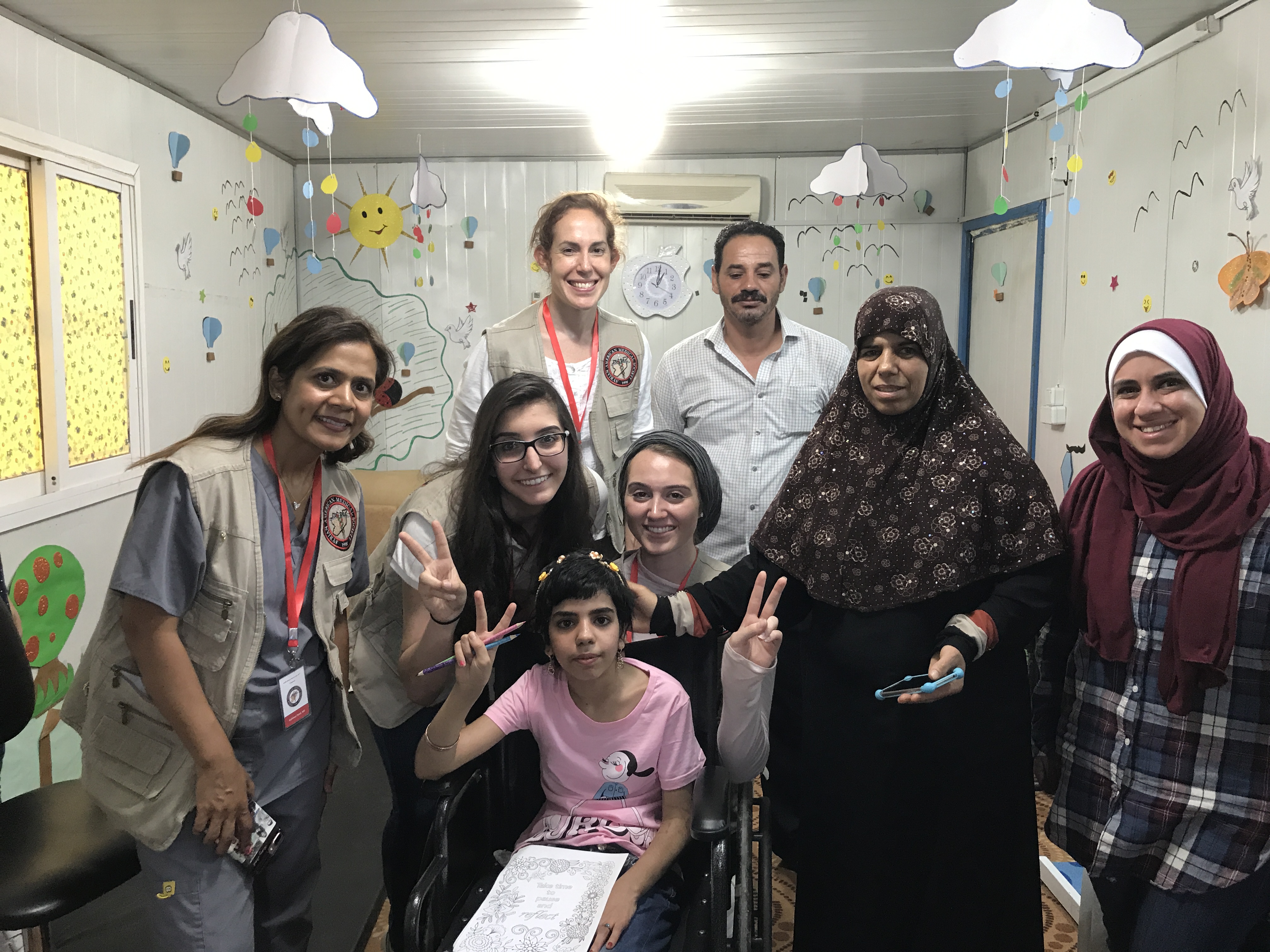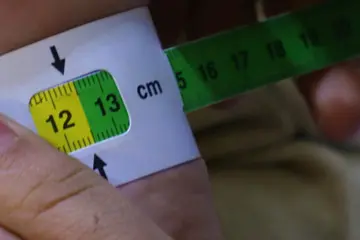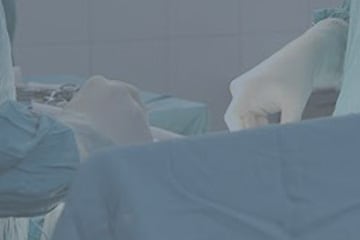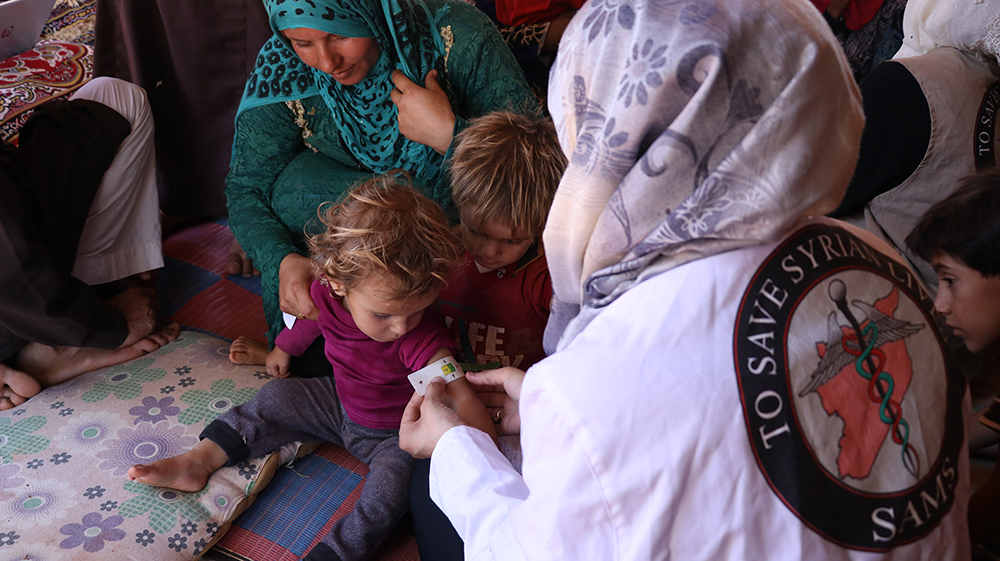July 26, 2017
Vickey Patel, PT, MS, is a physical therapist who recently joined our SAMS medical mission to Jordan in July. Together, she and Lydia Palmer, an occupational therapist, supported 70 patients in need of rehabilitation and therapeutic care. She shared with us her motivation for joining a SAMS medical mission, and the story of a patient whose resilience and courage had a dramatic impact on the entire therapy team.
I am not Muslim.
I am not Syrian.
I do not speak Arabic.
I am, however, a physical therapist trained to help individuals restore their function from disabilities caused by disease, disorders or injuries. My focus, as a physical therapist, is to ultimately improve the quality of life of my patients.
Over the last few years, as I watched all the horrific news reports about the victims of the Syrian conflict, I couldn’t help but think about their chance for recovery from events such as chemical attacks and bomb blasts. I want to help, I need to help, but how can I help? I thought to myself.
I found myself researching the victims’ rehabilitation path and access to care. Unfortunately, my search often fell short, as I learned about the grim reality of limited healthcare across war-torn Syria. Many injured Syrians have little to no access to rehabilitation. In severe cases, they must be transferred to other countries for rehabilitation. The level of disability caused by the Syrian conflict is enormous. Victims must endure a dismal quality of life in the wake of their injuries. My search brought me to SAMS, an organization that recognizes the impact that physical and occupational therapists, can have on providing health care to Syrian refugees.
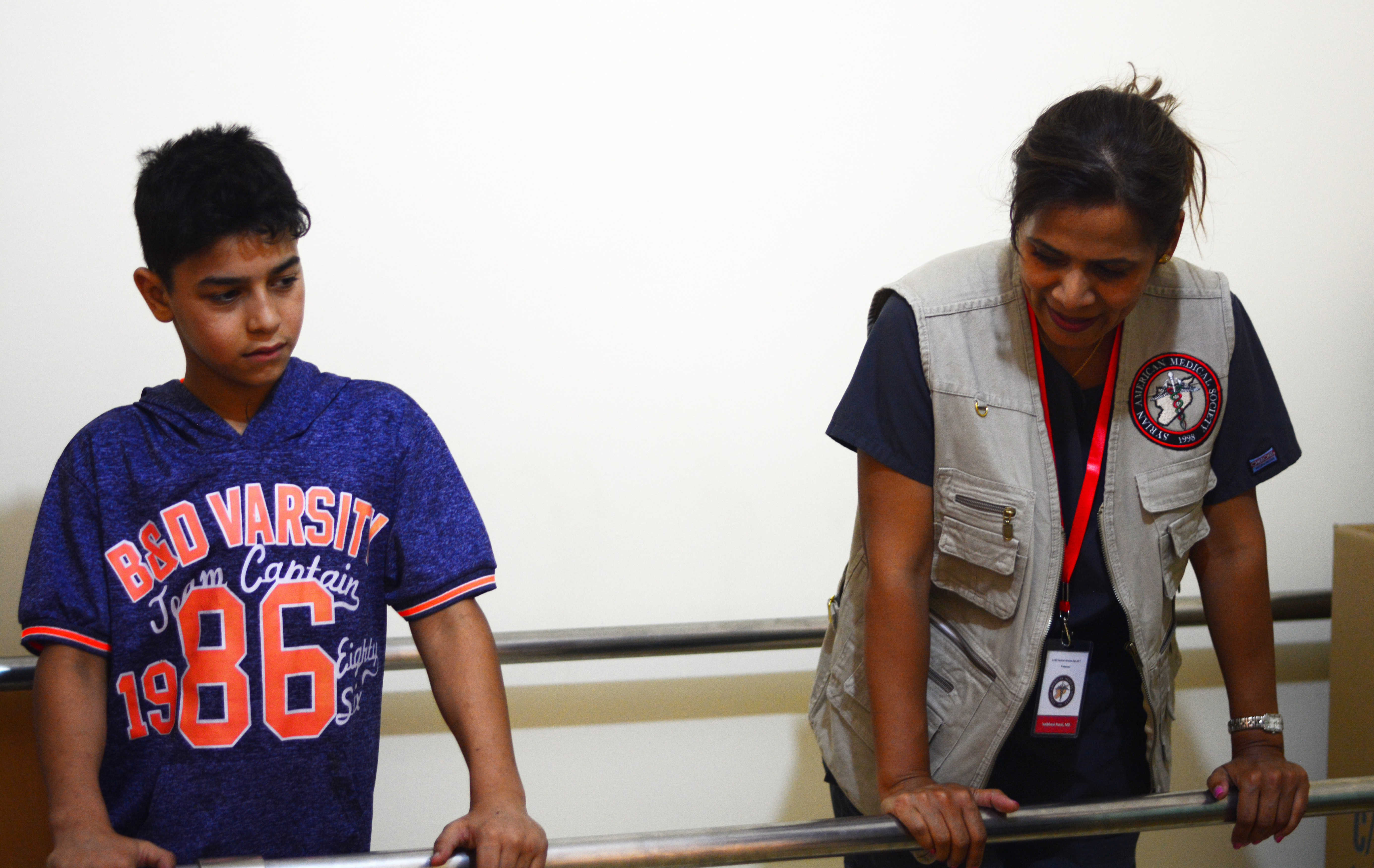 I had been involved in medical missions before, but nothing could have prepared me for the week I experienced during the SAMS Jordan mission in July. The stories we heard were heartbreaking; wives left widowed with 4-5 children, children born with preventative disabilities, husbands injured in the conflict. The children coming into the clinics often had very flat affects, no doubt from Post-Traumatic Stress Disorder (PTSD). The physical impairment left from trauma was no more than the immense psychological and emotional toll on these children.
I had been involved in medical missions before, but nothing could have prepared me for the week I experienced during the SAMS Jordan mission in July. The stories we heard were heartbreaking; wives left widowed with 4-5 children, children born with preventative disabilities, husbands injured in the conflict. The children coming into the clinics often had very flat affects, no doubt from Post-Traumatic Stress Disorder (PTSD). The physical impairment left from trauma was no more than the immense psychological and emotional toll on these children.
In the United States, as therapists, we often evaluate patients and then provide them with treatment 2-3 times per week. This treatment can last anytime from weeks to months. On a mission, we have approximately 45 minutes to an hour to evaluate, treat, and discharge -all in one encounter. I often found myself asking the parents to videotape me performing treatment techniques, so that they could in turn be the therapist for their children when I left.
Every patient I encountered that week left an imprint on my heart, but one in particular stood out. She represents the hope and resilience that the younger generation of refugees will need in order to persevere through what seems like an impossible reversal of fate.
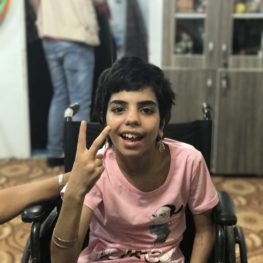 A smiling 12-year-old girl presented to the Zaatari Camp physical therapy/occupational therapy clinic two months after a bomb related injury. In Syria, she was home alone when an airstrike hit her house. The roof collapsed and buried her in the rubble for hours before rescuers were able to extract her. She sustained a Traumatic Brain Injury, multiple vertebral fractures, a humerus fracture, pelvic fractures, and a femur fracture. She was considered to be one of the “lucky” ones who lived through the attack.
A smiling 12-year-old girl presented to the Zaatari Camp physical therapy/occupational therapy clinic two months after a bomb related injury. In Syria, she was home alone when an airstrike hit her house. The roof collapsed and buried her in the rubble for hours before rescuers were able to extract her. She sustained a Traumatic Brain Injury, multiple vertebral fractures, a humerus fracture, pelvic fractures, and a femur fracture. She was considered to be one of the “lucky” ones who lived through the attack.
Through translation, her mother expressed the guilt of leaving her daughter home that day, wishing that she was the one home during the blast instead. The girl spent over a month in a coma and arrived at Zaatari just two days before her visit with us. Her family reported she was brought to Jordan for rehabilitation because the area of Syria she lived in was too dangerous and lacked any adequate follow up care.
During her visit, both the occupational therapist Lydia Palmer and myself, along with the local PT/OT’s at Zaatari, teamed up to provide her a comprehensive evaluation and treatment with the limited time we had. With physical assistance from the therapists, she was able to stand and take two small steps, something she accomplished for the first time since the attack. The mother also learned how to safely transfer her daughter in and out of the wheelchair without injury to herself. The local therapists graciously accepted her as a new patient and will continue to provide her the continued therapy she desperately needs.
What I remember most about this patient, besides the horrific mechanism of her injuries, is the smile on her face. Throughout the session, she continued to smile despite the pain she was undoubtedly feeling. Just as a typical tween, she loved having her picture taken and even nudged us to give the “peace” sign. The irony in this did not escape me – resilience and hope personified in a 12 year-old-girl whose life has been forever changed by war, now holding up the peace sign.
I look forward to returning to another SAMS mission. Improving function and reducing disability for injured refugees will allow them to someday be productive members of whatever community they integrate into. This time, as I watch the news reports, I know that organizations such as SAMS are having a direct impact on addressing this through their medical missions. This time, I watch and know how to help.
– Vickey Patel PT, MS

